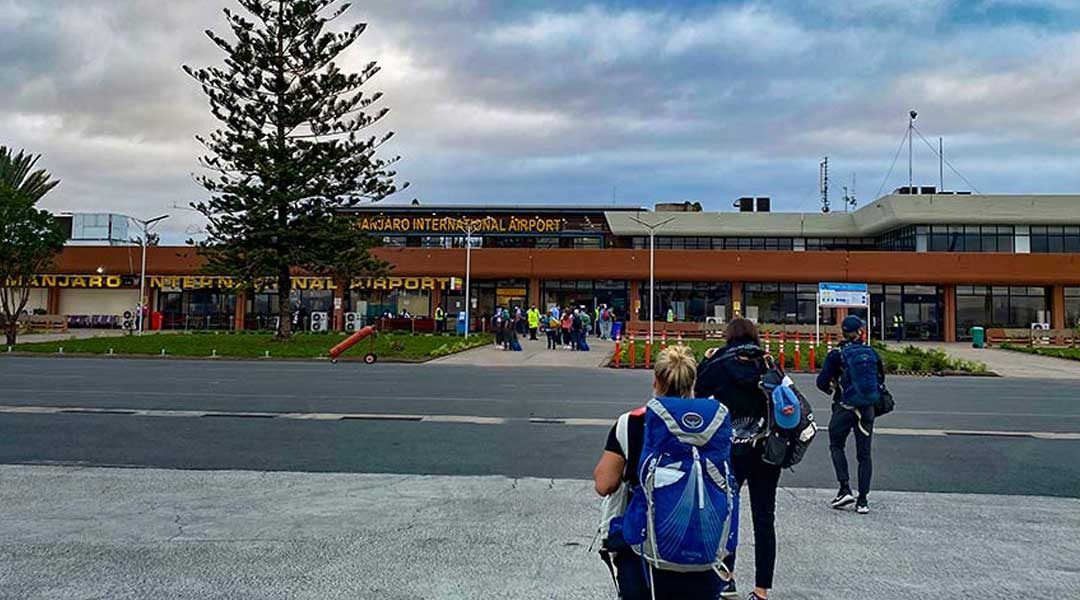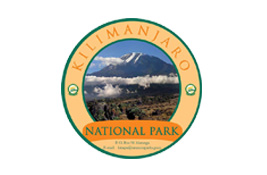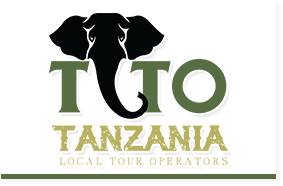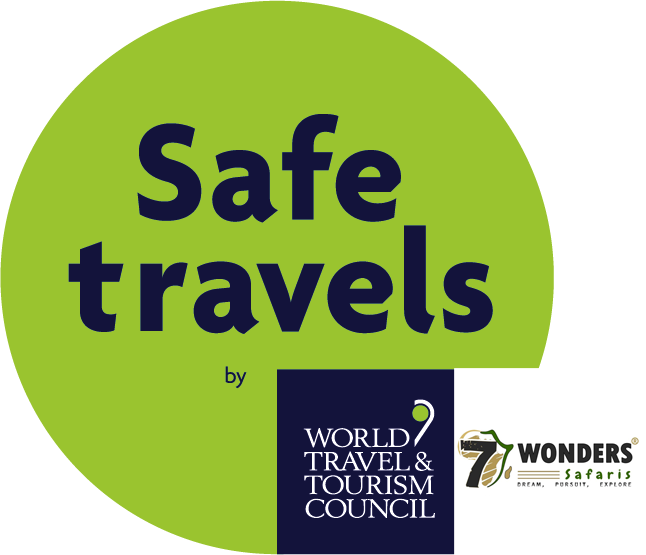13 Days Kilimanjaro Trekking via Machame Route and Wildlife Safari.
- Home
- 13 Days Kilimanjaro Trekking via Machame Route and Wildlife Safari.
Tanzania, Northern Circuit.
- Moshi town,
- Kilimanjaro NP,
- Arusha Town,
- Tarangire NP,
- Lake Manyara NP,
- Serengeti NP, and
- Ngorongoro Crater.
Duration
13 Days
Tour Type
Trekking + Safari.
Group Size
6 People
Languages
English.
- Overview
For those who only have six days to climb Kilimanjaro, the Machame route is the best choice because of its acclimatization profile. Compared to other six-day routes, the Machame route exposes the climber to higher elevations quicker as from day three which kick starts the body’s adaptation to altitude. However, this route requires that a person is in good shape to be able to tackle the challenges of elevation gains and losses. The Machame route can be done in the minimum of 6 days but a 7-day trek is recommended so climbers are well rested and acclimatized before making the final ascent to the summit combine the trek with safari The safari section will take you to some amazing wildlife areas with awesome game viewing, begin with Tarangire and witness some great sighting of elephants with its dotted landscape, followed by Lake Manyara with its overwhelming bird spices and what about Serengeti and Ngorongoro great sighting of the big five.
- Tour Highlights.
- Look for unique silvery checked hornbills in Lake Manyara NP.
- Witness the wildebeest crossing the Mara River a unique experience.
- See some of Africa stealthy predator’s crocodiles, lions, leopard and hyena in Serengeti and Ngorongoro
- Admire your breakfast on the edge of the Mara River with a glance of hippos.
- Included & Excluded
- Park fees (For non-residents)
- All activities (Unless labeled as optional)
- All accommodation (Unless listed as upgrade)
- A professional driver/guide
- All transportation (Unless labeled as optional)
- Mineral water
- Roundtrip airport transfer
- Meals (As specified in the day-by-day section)
- Drinks (As specified in the day-by-day section)
- International flights (From/to home)
- Additional accommodation before and at the end of the tour
- Tips (Tipping guideline US$10.00 pp per day)
- Personal items (Souvenirs, travel insurance, visa fees, etc.)
- Government imposed increase of taxes and/or park fees
- Itinerary
13Days /12 Night
Day 1: Arrival.
Arrive in Kilimanjaro and meet our representative, after a short briefing you will be transferred to Weruweru river lodge. The lodge is nestled on the flours of Kilimanjaro with great views of the mountain with a swimming pool to relax and a nice place for your body to kick start acclimatization.
- Location: Moshi Town.
- Accomodation: Weru weru River lodge | Kia Planet lodge
- Meal: Lunch and Dinner.

Day 2: Machame Gate.
The drive from Weruweru River lodge to the Mount Kilimanjaro National Park Gate takes about 30 minutes. The journey passes through the village of Machame which is located on the lower slopes of the mountain.
We now leave the park gate and walk through the rain forest on a winding trail up a ridge. Lower down, the trail can be muddy and slippery. Gaiters and trekking poles are a good idea here. We continue a short distance until we reach Machame Camp.
- Elevation (ft.): 5,400ft to 9,400ft
- Distance: 11 km
- Hiking Time: 5-7 hours
- Habitat: Rain Forest Camp
- Location: Kilimanjaro NP.
- Accomodation: Machame camp.
- Meal: Breakfast, Lunch, Dinner.

Day 3: Shira Camp.
After breakfast, we leave the glades of the rain forest and continue on an ascending path, crossing the little valley walking along a steep rocky ridge, covered with heather until the ridge ends. The route now turns west onto a river gorge. Time for rest, dinner, and overnight at the Shira campsite.
- Elevation (ft.): 9,400ft to 12,500ft
- Distance: 5 km
- Hiking Time: 4-6 hours
- Habitat: Moorland.
- Location: Kilimanjaro NP.
- Accomodation: Shira Camp.
- Meal: Breakfast, Lunch, Dinner.

Day 4: Laver Tower to Barranco Camp.
From the Shira Plateau, we continue to the east up a ridge, passing the junction towards the peak of Kibo. As we continue, our direction changes to the South East towards the Laver Tower, called the “Shark’s Tooth.” Shortly after the tower, we come to the second junction which brings us up to the Arrow Glacier at an altitude of 16,000ft. We now continue down to the Barranco Hut at an altitude of 13,000ft. Here we rest, enjoy dinner, and overnight. Although you end the day at the same elevation as when you started, this day is very important for acclimatization and will help your body prepare for summit day. Elevation (ft.): 12,500ft to 13,000ft
- Distance: 10 km
- Hiking Time: 6-8 hours
- Habitat: Semi Desert
- Location: Kilimanjaro NP.
- Accomodation: Barranco Camp.
- Meal: Breakfast, Lunch, Dinner.

Day 5: Karanga to Barafu Camp.
After breakfast, we leave Barranco and continue on a steep ridge passing the Barranco Wall, to the Karanga Valley campsite. Then, we leave Karanga and hit the junction which connects with the Mweka Trail. We continue up to the Barafu Hut. At this point, you have completed the South Circuit, which offers views of the summit from many different angles. Here we make camp, rest, enjoy dinner, and prepare for the summit day. The two peaks of Mawenzi and Kibo are to be seen from this position. Elevation (ft.): 13,000ft to 15,000ft
- Distance: 9km
- Hiking Time: 8-10 hours
- Habitat: Alpine Desert
- Location: Kilimanjaro NP.
- Accomodation: Barafu Camp.
- Meal: Breakfast, Lunch, Dinner.

Day 6: Summit to Mweka Camp.
Very early in the morning (midnight to 2 am), we continue our way to the summit between the Rebmann and Ratzel glaciers. You head in a northwesterly direction and ascend through heavy scree towards Stella Point on the crater rim. This is the most mentally and physically challenging portion of the trek.
At Stella Point (18,600 ft.), you will stop for a short rest and will be rewarded with the most magnificent sunrise you are ever likely to see (weather permitting). From Stella Point, you may encounter snow all the way on your 1-hour ascent to the summit. At Uhuru Peak, you have reached the highest point on Mount Kilimanjaro and the continent of Africa. Faster hikers will see the sunrise from the summit.
From the summit, we now make our descent continuing straight down to the Mweka campsite, stopping at Barafu for lunch. You will want gaiters and trekking poles for the loose gravel going down. Mweka Camp is situated in the upper forest and mist or rain can be expected in the late afternoon. Later in the evening, we enjoy our last dinner on the mountain and a well-earned sleep.
- Elevation (ft.): 15,300ft to 19,345ft (and down to10,000ft)
- Distance: 5 km ascent / 12 km descent
- Hiking Time: 7-8 hours ascent / 4-6 hour
- Habitat: Arctic
- Location: Kilimanjaro NP.
- Accomodation: Mweka Camp.
- Meal: Breakfast and Dinner.

Day 7: Mweka Camp - Arusha Town.
After breakfast, we continue the descent down to the Mweka Park Gate to receive your summit certificates. At lower elevations, it can be wet and muddy. Gaiters and trekking poles will help. Shorts and t-shirts will probably be plenty to wear (keep rain gear and warmer clothing handy).
From the gate, you continue another one and half hours through Moshi town to Weruweru lodge. Have a nice warm shower and time to relax in the poolside and swimming holding your Kilimanjaro beer. You will have a private vehicle to the lodge.
- Elevation (ft.): 10,000ft to 5,400ft
- Distance: 10 km
- Hiking Time: 3-4 hours
- Habitat: Rain Forest.
- Location: Arusha Town.
- Accomodation: Arusha Villa | Lake Duluti Serena Hotel
- Meal: Breakfast and Dinner

Day 8: Arusha - Tarangire National Park.
In the morning you will be picked from your hotel and drive to Tarangire National Park for game viewing the Giant baobab trees, bush savannah, and the seasonal marshes add to the wonder of this nature reserve. The Tarangire National Park is considered one of the best places to view elephants up close, not only because there are thousands of animals but also because they are not disturbed by the presence of vehicles. The park is also home to buffaloes, zebras, and wildebeests which are always closely followed by a range of predators such as lions, Leopard, and cheetah late in the drive to tour lodge.
- Location: Tarangire Nationa Park
- Accomodation: Tarangire safari Lodge / Tarangire Tortilis Tented camp.
- Meal: Breakfast andLunch.

Day 9: Tarangire - Lake Manyara NP.
After breakfast onward to Lake Manyara, the park is known for its over 400 bird species, primate-filled forests, and grassy plains. A large area of the park is covered by the alkaline Lake, the seasonal breeding grounds for large colonies of water birds, the forest around the gate is a good nesting area for pelicans, herons, and marabou stock, The park is also home to giraffes, hippos, wildebeests, impalas and groups of noisy monkeys and baboons. Afternoon drive to Farm of Dream Lodge.
- Location: Lake Manyara National Park
- Accomodation: Farm of Dreams | Marera Valley Lodge
- Meal: Breakfast andLunch.

Day 10: Karatu - Serengeti National Park.
After breakfast, you will travel via the cooler highlands towards the southern Serengeti and at mid-day, you will reach the plains of the Serengeti plains. This park is the oldest and famous in Tanzania and has a diversity of habitats and landscapes – short grass plains, savannah, thick bush, swamps, and lakes. Bizarre rock formations called kopjes dot the grassy landscape where predators are often seen. The Serengeti is famous for the yearly migration when hundreds of thousands of wildebeests and zebras trek to find fresh grass and water.
- Location: Serengeti National Park.
- Accomodation: Serengeti Heritage Tented camp | Serengeti Tortilis camp.
- Meal: Breakfast andLunch.

Day 11: Full Day Serengeti NP.
The entire day is dedicated to game viewing in the Serengeti National Park. The areas that you visit will depend upon where the migrating herds are. Predators usually follow closely behind the trekking animals and include lions, leopards (in the acacia trees), and cheetahs. During the short rainy season in November and December, the herds move from the hills in the north to the plains in the south. During the longer rainy season from April to June, they return up north. As the migration is completely dependent on the yearly rainfalls, the location of the herds may vary from year to year but your guide will know where to locate the animals and where to see them best. You will spend another night at last night’s camp.
- Location: Serengeti National Park.
- Accomodation: Serengeti Heritage Tented camp | Serengeti Tortilis camp.
- Meal: Breakfast andLunch.

Day 12: Serengeti NP - Ngorongoro Conservation Area.
On your outward journey to the park gate, you will enjoy some more game viewing before you leave the Serengeti National Park in the early afternoon to continue your journey to the Ngorongoro Conservation Area.
- Location: Ngorongoro Conservation area.
- Accomodation: Ngorongoro Angata tented camp | Rhino lodge.
- Meal: Breakfast andLunch.

Day 12: Ngorongoro Crater - Arusha.
Rise and shine! After breakfast at daybreak descend down to the crater floor. The massive collapsed volcano is home to over 25,000 mammals ranging from the “Big Five” – lion, elephant, buffalo, rhino, and leopard to spotted hyenas, rare golden jackal, and some of the more than 350 bird species of the area. After an extensive game drive and a picnic for lunch, you will leave the caldera in the afternoon onward to Arusha.
- Location: Ngorongoro Ngorongoro crater.
- Accomodation: Ngorongoro Angata tented camp | Rhino lodge.
- Meal: Breakfast andLunch.

- Accomodation.
Day1: Weru weru River lodge.
Day 1: Kia Planet lodge.
Day 7: Arusha Villa.
Day 7: Lake Duluti Serena Hotel.
Day 8: Tarangire safari Lodge
Day 8: Tarangire Tortilis Tented camp.
Day 9: Farm of Dreams.
Day 9: Marera Valley Lodge.
Day 10-11: Tingitana Tented camp.
Day 10-11: Tingitana Tented camp
Day 12: Ngorongoro Angata tented camp
Day 12: Rhino lodge
End of Service.
Additional accommodation can be arranged for an extra cost.
From
$ 3,210










